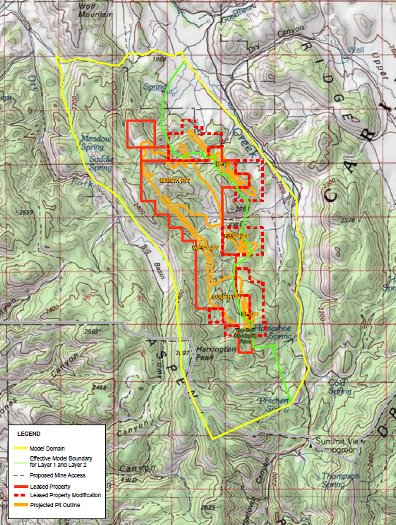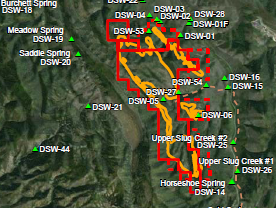We use cookies to make your experience better. To comply with the new e-Privacy directive, we need to ask for your consent to set the cookies. Learn more.
Conceptual groundwater and transport model of phosphate mine
US Bureau of Reclamation

Overview
- Mining application of groundwater modeling
- Conceptual groundwater model development
- USGS MODFLOW model setup
- Seepage and dewatering issues, contaminant transport
Applied Software
- GMS (MODFLOW)
- ArcGIS
Problem
 Phosphate mining operations in the Dairy Syncline area in the southeast Idaho phosphate mining district have led to the need to develop a groundwater flow and transport model to assess potential environmental impacts to groundwater resources in the area. The initial focus of the study was to design a conceptual model of the hydrogeology and surface water/groundwater interactions that exist within the project location and surrounding areas and to propose the digital modeling approach to be used.
Phosphate mining operations in the Dairy Syncline area in the southeast Idaho phosphate mining district have led to the need to develop a groundwater flow and transport model to assess potential environmental impacts to groundwater resources in the area. The initial focus of the study was to design a conceptual model of the hydrogeology and surface water/groundwater interactions that exist within the project location and surrounding areas and to propose the digital modeling approach to be used.
Solution
 Aquaveo prepared recommendations for developing the conceptual flow and transport model. The conceptual model determines the appropriate model boundary conditions and to identify features that should be included in the numerical model. The model will address impacts such as seepage through the mine overburden fills and drawdown related to the pumping of a nearby water supply well. Local impacts of contaminant transport, particularly of Selenium, will also be addressed.
Aquaveo prepared recommendations for developing the conceptual flow and transport model. The conceptual model determines the appropriate model boundary conditions and to identify features that should be included in the numerical model. The model will address impacts such as seepage through the mine overburden fills and drawdown related to the pumping of a nearby water supply well. Local impacts of contaminant transport, particularly of Selenium, will also be addressed.
Benefits
The groundwater model is to be developed by the US Bureau of Reclamation using the conceptual model development as guidelines. The client will be tasking Aquaveo as their model review team for assessment of this model, and will have Aquaveo run modeling scenarios for mine seepage, effects on wells and contaminant transport.